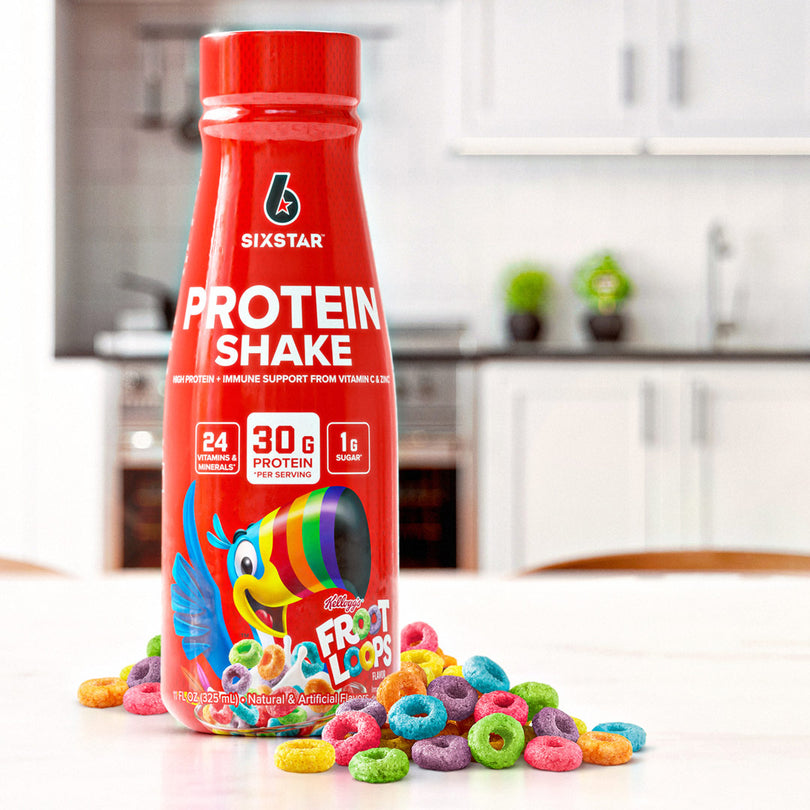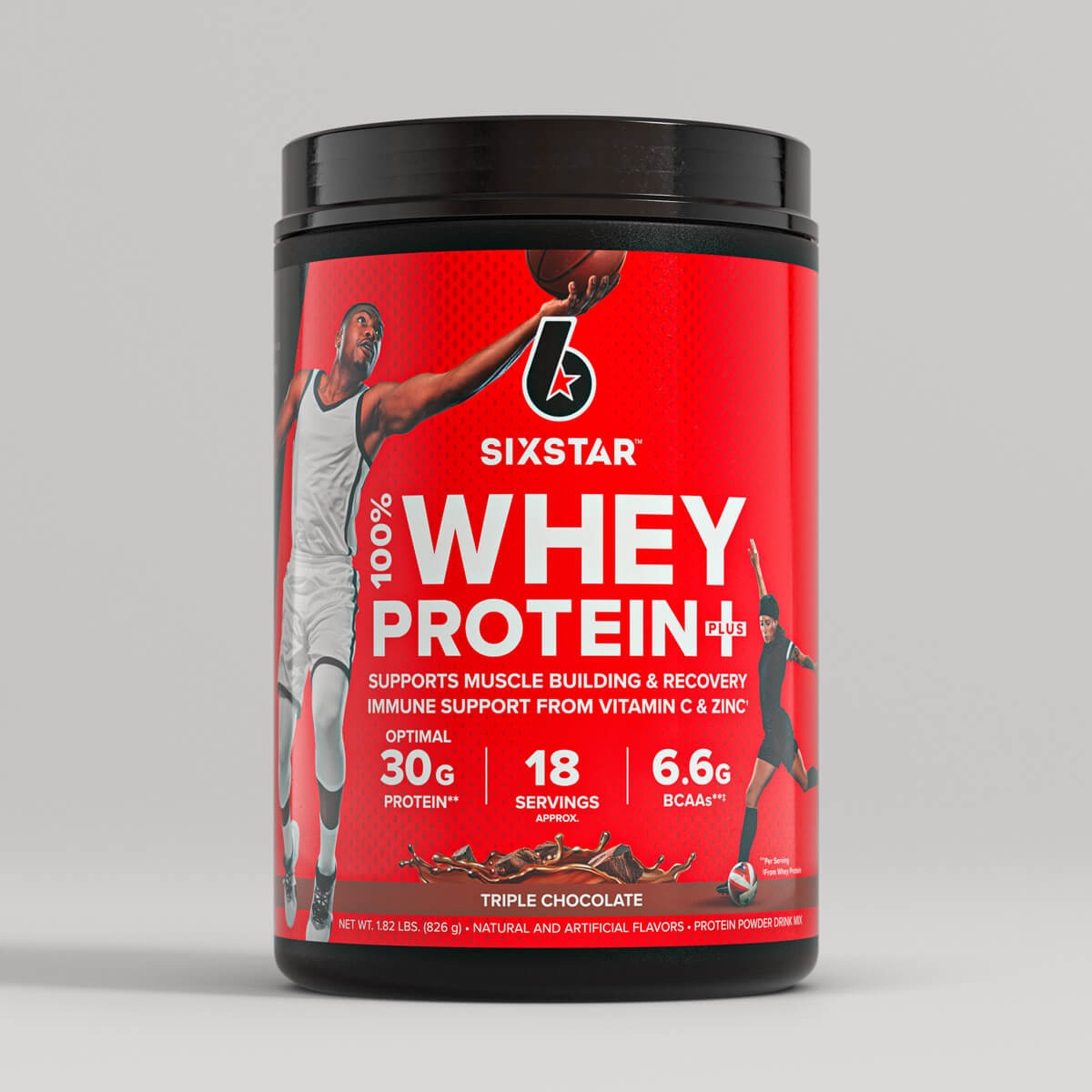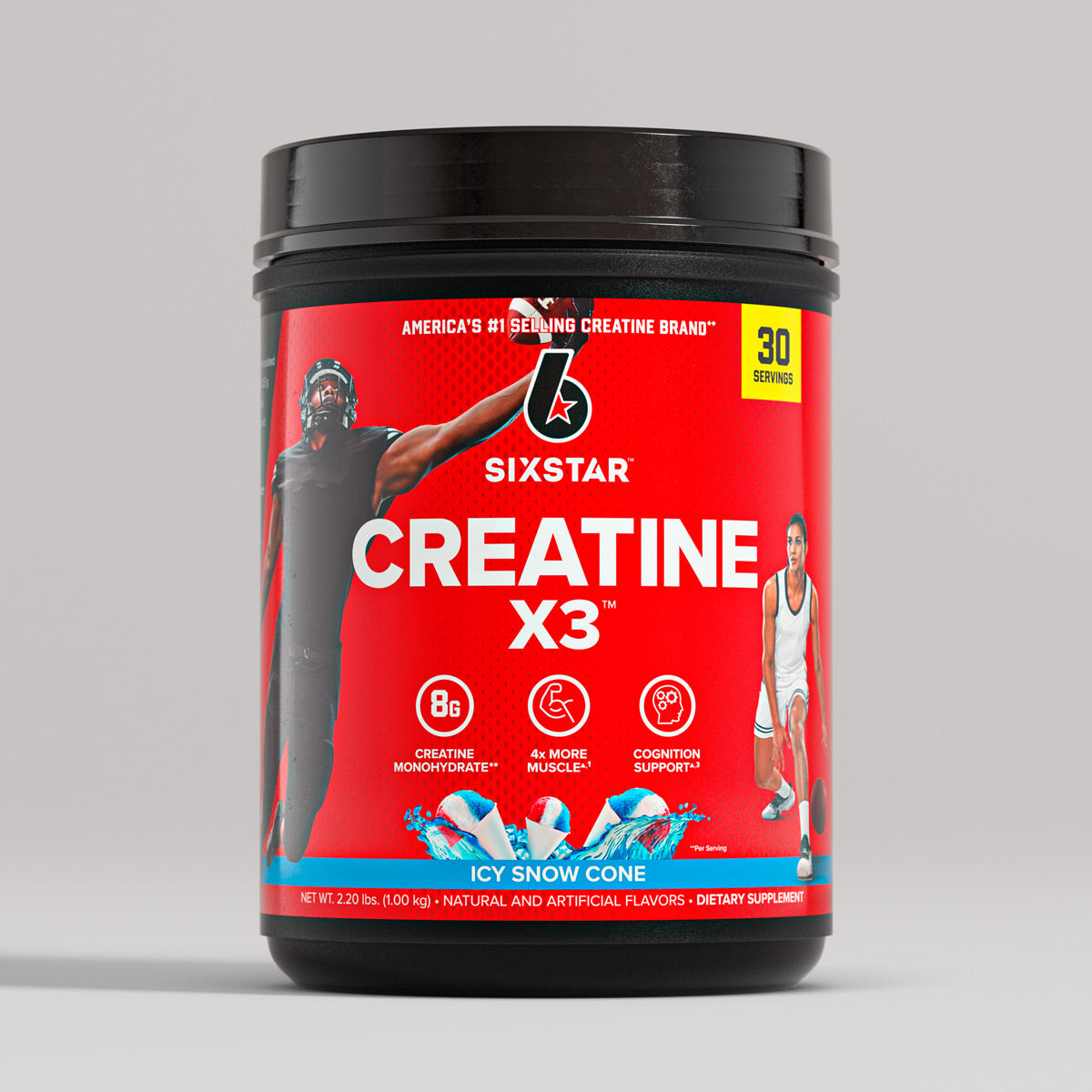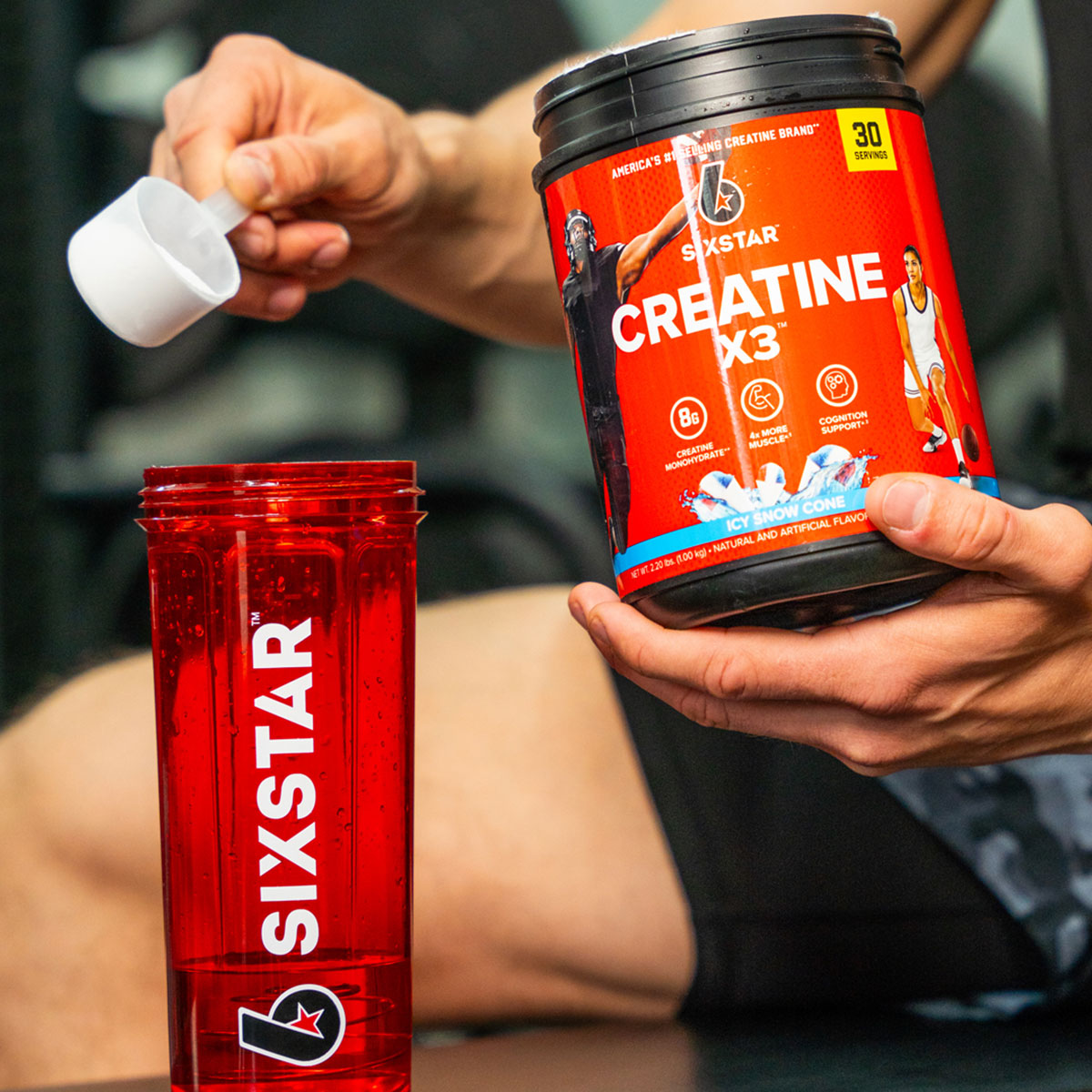The number of calories burned by lifting weights throughout a strength training session can be significant and, when done consistently over time, can result in substantial weight loss.
Strength training is used by most fitness professionals due to its multiplicity of health benefits, including muscle mass enhancement, increase of strength, and improvement of overall fitness. The second part of any training regime is the diet and calorie intake and expenditure. Many gym-goers still question the number of calories burned by strength training. Let’s get into the nitty-gritty!!
Table of content
How many calories does weightlifting burn?
To calculate the number of calories burnt, let’s start by learning what calories are. Calories are a measurement of energy, and when referring to a specific number of calories burnt from a specific activity, we're attempting to quantify the amount of energy exhausted.
Several factors can influence the number of calories burnt by strength training. Most importantly, the intensity and duration of the workout will significantly impact the number of calories burnt throughout a strength training session.
As a basic rule, the longer and more intense the session, the more calories burnt by lifting weights. As you can imagine, a 60-minute strength training workout will burn more calories than a 30-minute session.
By challenging the bodies through increasing the weight, reps, sets, or a combination of these also known as progressive overload, means, significant calorie burn can be achieved throughout a weight training session.
How Many Calories are Burnt by Lifting Weights for an Hour?
Many factors will impact the number of calories burnt during a strength training session. The two most important factors that affect the number of calories burnt are, the amount of weight being lifted and how quickly you're moving through a training session.
An average person could burn anywhere from 180-300 calories during a 60-minute strength training session.
Exercises like squats and deadlifts, for example, will burn more calories than exercises like bicep curls since they activate more and larger muscle groups, resulting in more energy expended.
Also Read: How To Become More Athletic?
How Many Calories are Burnt by Lifting Weights for 30 minutes?
When estimating the number of calories burned by lifting weights for 30 minutes, consider the previous section; we can assume the average person can burn three to five calories per minute while lifting weights. If we do the math, it adds to an average person burning 90-150 calories by lifting weights for 30 minutes.(1)
Factors That Affect How Many Calories You Burn by Lifting Weights
Now that you have an idea of the number of calories that can be burnt by weightlifting, let’s dive deeper to find out how different factors can make significant difference in burning calories.
1. Exercise Selection
We often go to gym and start with an exercise that we like more than others. What you want to achieve is to select an exercise that gets multiple muscle groups involved, that will really skyrocket calorie burn.
I like deadlifts, squats, and bench presses because those usually burn a lot more calories than isolation exercises that target smaller muscle groups.
If you really want to mix it up, find a combo of isolation and compound exercises so you can work all your muscles.
2. Intensity
If you want to burn more calories, you must pick up on that intensity as simple as that. The higher the intensity, the more calories you’ll burn. The way I like to increase the intensity of my workouts is with explosive movements, because those need a lot of energy. Also, you can adjust the weight, reps sets and the tempo of your workout to customize it and make sure you’re burning as many calories as you can.(2)
3. Rest Periods
With heavier lifts you most likely need to rest longer because those need a lot of strength and also a lot of recovery. But here is a cheat code; if you shorten rest periods and are not lifting super heavy weights, you’ll burn a lot of calories because shortening rest periods will increase the amount of oxygen your heart needs to meet the demand, and that will torch calories.(3) Incorporating fast-paced training at lower weight levels can increase your calories burned but this transitions your training sessions into more of a HITT or circuit style training.
4. Training Volume
This is a no brainer! Movement creates calorie burn, the volume of your session (the number of sets, reps, and exercises) will influence how many calories you’ll spend. This means that, if you do more sets and reps with shorter rest periods, you’ll burn more calories. Always make sure you’re not overtraining.
5. Training Experience
If you’re a beginner, this is very interesting! For a beginner, weightlifting is a new type of workout that will require your body to get used to and, in this process, guess what? You’re burning more calories.
However, if you’re a pro, you’ll need to do some advanced techniques or add more weights to keep your muscles challenged.
6. Body Composition
Muscles are metabolically active and need a lot more energy for maintenance than fat. This is indicative of the more muscle you have the more calories you burn.
So, if you have a lot of muscle, you’ll burn a lot more calories resting compared to someone that has a lot of fat.(4)
Don’t be discouraged if you have more fat than muscle; as you lift weights and work out in general, you’ll lose fat and increase the number of calories you burn. It all comes together to make you fit!
7. Weightlifting Add-Ons to Burn more calories
Some people don’t stop at average caloric burn, rather take their workouts to the next level, and burn even more calories, lift even more weights, and build muscle like a pro!
We can all agree that weightlifting can be challenging. However, keeping your end goal in mind, you keep challenging yourself and with new exercises and techniques to burning more calories. Read this section if you are ready to push yourself with weightlifting add-ons:
8. High-Intensity Interval Training (HIIT)
This is my personal favorite and absolutely love this one and recommend it to everyone that wants to mix it up or focus on losing weight while also working on their muscles.
You can do a weightlifting session and then afterwards, do some intense cardio! You can jump rope, do mountain climbers or burpees.
9. Compound Exercises
As mentioned earlier, if you want to make weightlifting even more challenging, you’ll want to include compound exercises into your routine.
You can do squats, deadlifts, overhead presses, rows… basically, anything that’s going to really work multiple muscle groups at the same time.
10. Cardio
Combining cardio with weightlifting is like a supercharged workout because it challenges different energy systems. Do some running or jumping jacks, and then do a weightlifting session.
11. Supersets and Drop Sets
Learn this tip and thank me later, because they are very useful and will really increase the calorie burn. Supersets are two different exercises performed back-to-back, without making any rest in between them. The benefit here is you can still allow one muscle group to rest while you are working out another muscle group.
You can also do drop sets. For drop sets, you slowly reduce the weight as your muscles get more tired. This will allow you to do more reps and generally work out longer.
12. Some Additional Benefits of Weightlifting
Whether you’re trying to cut fat, get stronger, get tone or improve athletic performance, lifting weights is for you. Everyone should be lifting weights, you may just need to find the best way that works for you and that you are capable of doing, because the benefits on your body but also in your general life are second to none.
13. Stress Relief
Exercise in general releases endorphins which make you feel good. It is also found that people who strength train regularly tend to manage stress better.
Strength and resistance-training in general has shown an improvement in memory and cognitive function. So next time you’re looking for a little relief hit the weights. One study concludes that resistance exercises provide support for clinical management of anxiety(5)
14. Improved Fat Loss
A heavy round of strength training leads to high consumption of oxygen in the hours to days after the training session. The body using more oxygen means that it requires more caloric expenditure and leads to a high and increased metabolic rate which means more calories burned which leads to greater fat loss.(6)
15. Increased Energy
Weight/strength training helps improve the overall quality of your sleep during the night which means you feel more rested when going into the next day.
Studies have reported improved physical performance, movement control, walking speed and functional independence.(7)
16. Healthy Heart and Bones
Weightlifting along with strength training is a great way of reducing your risk of heart disease and those who strength train are less likely to have heart disease risk factors such as a large waist circumference, high triglycerides, elevated blood pressure, and elevated glucose levels.
It is also a great way to help you as you age, which leads to a risk of losing both bone and muscle mass. Strength training is an excellent way to help combat the loss of bone mass, and it decreases the risk of osteoporosis.(7)
17. Reduced Injury Risk
Strength training safely, not only helps to strengthen your muscle and increase your bone density but reduces the risk of injury. Training helps build stronger connective tissues and tendons as well as stabilizing joints.
It’s also key for helping in correcting bad posture, building better form in everyday activities, and preventing back injuries. According to one study, authors suggest that resistance training is effective in reducing the incidence of injury(8)
The Bottom Line
As it turns out, the fundamental question surrounding how many calories does weightlifting burn misses the mark.
The aim of the game shouldn’t always be to burn the maximum number of calories possible. At the end of the day, the most effective workout is the one you’re consistent with! Find something you love and look forward to and add variety to make it work for your body goals!
References:
- Harvard Medical School (2021). Calories Burned in 30 Minutes for People of Three Different Weights.
- Reis VM, Garrido ND, Vianna J, Sousa AC, Alves JV, Marques MC. Energy cost of isolated resistance exercises across low- to high-intensities. PLoS One. 2017 Jul 24;12(7):e0181311. doi: 10.1371/journal.pone.0181311. PMID: 28742112; PMCID: PMC5524349.
- Scott CB, Leighton BH, Ahearn KJ, McManus JJ. Aerobic, anaerobic, and excess postexercise oxygen consumption energy expenditure of muscular endurance and strength: 1-set of bench press to muscular fatigue. J Strength Cond Res. 2011 Apr;25(4):903-8. doi: 10.1519/JSC.0b013e3181c6a128. PMID: 20703175.
- Ramos-Campo DJ, Andreu Caravaca L, Martínez-Rodríguez A, Rubio-Arias JÁ. Effects of Resistance Circuit-Based Training on Body Composition, Strength and Cardiorespiratory Fitness: A Systematic Review and Meta-Analysis. Biology (Basel). 2021 Apr 28;10(5):377. doi: 10.3390/biology10050377. PMID: 33924785; PMCID: PMC8145598.
- Strickland JC, Smith MA. The anxiolytic effects of resistance exercise. Front Psychol. 2014 Jul 10;5:753. doi: 10.3389/fpsyg.2014.00753. PMID: 25071694; PMCID: PMC4090891.
- Willis LH, Slentz CA, Bateman LA, Shields AT, Piner LW, Bales CW, Houmard JA, Kraus WE. Effects of aerobic and/or resistance training on body mass and fat mass in overweight or obese adults. J Appl Physiol (1985). 2012 Dec 15;113(12):1831-7. doi: 10.1152/japplphysiol.01370.2011. Epub 2012 Sep 27. PMID: 23019316; PMCID: PMC3544497.
- Westcott WL. Resistance training is medicine: effects of strength training on health. Curr Sports Med Rep. 2012 Jul-Aug;11(4):209-16. doi: 10.1249/JSR.0b013e31825dabb8. PMID: 22777332.
- Fleck SJ, Falkel JE. Value of resistance training for the reduction of sports injuries. Sports Med. 1986 Jan-Feb;3(1):61-8. doi: 10.2165/00007256-198603010-00006. PMID: 3633121.































